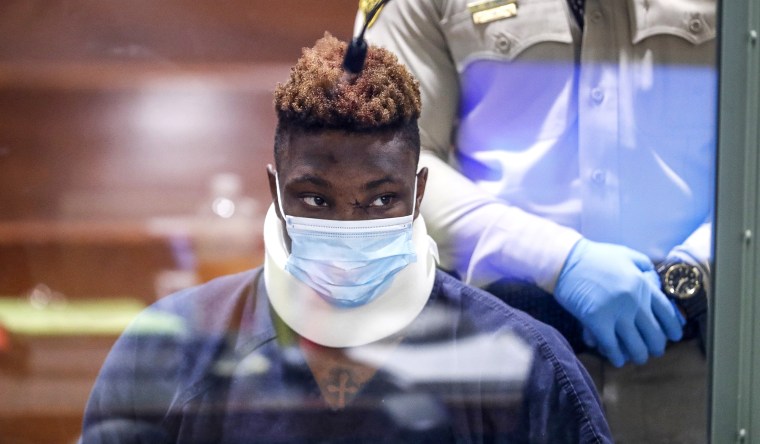Early Tuesday morning, Las Vegas Raiders wide receiver Henry Ruggs III crashed into another vehicle, while his blood alcohol concentration was at least twice the legal limit, according to authorities. He was allegedly traveling 156 miles per hour about two seconds before the collision, which killed the other driver and her dog, prosecutors said.
He has been charged with DUI resulting in death. (In a statement, Ruggs' lawyers said: "On behalf of our client Henry Ruggs III we are conducting our own investigation as of this writing and ask everyone to reserve judgment until all the facts are gathered.")
Drunk driving is unbelievably dangerous — and yet, still surprisingly common.
Drunk driving is unbelievably dangerous — and yet, still surprisingly common. In 2019, drunk-driving crashes killed over 10,000 people in the United States.
Las Vegas prosecutors may have liked to charge him with murder. Second-degree murder, a death that results from “malice” or an “abandoned and malignant heart,” could be appropriate here. It’s an unintentional killing by someone “fatally bent on mischief.”
Want more articles like this? Follow THINK on Instagram to get updates on the week's most important political analysis
But prosecutors can’t do this, so said the Nevada Supreme Court just last year. Even though drunk driving meets the legal definition of malice, is unlawful conduct, is inherently dangerous and often destroys life, the Nevada Legislature has designated a very specific crime for this kind of death.
But arguably, Nevada’s DUI laws, along with many DUI laws in the rest of the country, were broken long before the Nevada Supreme Court weighed in.
This ties back to the broader problem with DUI laws generally, and one that may have led to Ruggs thinking he could get behind the wheel: It’s not technically illegal to drink and drive in the United States.
All states have different laws, but they follow the same common theme. Drinking and driving is legal, unless or until the driver is impaired and incapable of safe driving. But what does that even mean? For police, it’s an arbitrary number that most folks have heard of but have no idea what it means: .08.
Point-oh-eight is the universal, arbitrary line in the sand for a driver’s blood alcohol concentration. Every state has had the same standard for decades now. But for many, if not most, people, it’s wildly abstract. Is it commonly understood that this number means 0.08 of a gram of alcohol per 100 milliliters of the blood of a person, or per 210 liters of his breath? Of course not.
Point-oh-eight is the universal, arbitrary line in the sand for a driver’s blood alcohol concentration.
Even for those scientifically oriented folks who know what BAC means, the only way to measure it is with scientific tools or scientific people: In Nevada, as elsewhere, that means a blood draw by a medical professional (not a police officer) or a breath test.
Regular citizens don’t typically have access to BAC-measuring equipment in the parking lot of the local watering hole. So everyone who has a couple of margaritas and drives is guessing. It’s that simple. And even if they did have access to these testing procedures at happy hour, these breath and blood tests are routinely challenged in court as inaccurate or sloppily administered anyway.
But here’s where it gets even sillier: That .08 reading only makes it easier for a court to conclude that the driver was incapable of safe driving. Prosecutors prefer to have a BAC reading, but they don’t even need it for a conviction. It’s illegal in Nevada — and most states — to drive “under the influence of intoxicating liquor.” That means a driver can get a DUI just based on how badly the arresting officer thinks the driver looks, smells and stumbles.
All of this nonsense has contributed to a grand public misconception, one Ruggs may have shared: that a driver can have “a couple” and then drive home. This is true — until it horribly, tragically isn’t.
It begs the question of why even have that nationwide, uniform .08 standard? Why not just have zero tolerance? Why not make .00001 the legal limit?
Because alcohol is a legal industry, and one that accounts for billions of dollars every year. Consider a bar on a country road without a bus stop or a train station. On Friday night, the parking lot is packed. How do you think those folks are getting home? They’ll finish up their last drink and tell themselves, “I’m fine to drive.” That sentence — that concept — exists across America. Until we find a way to change it, thousands and thousands of people will continue to die.
Related:

